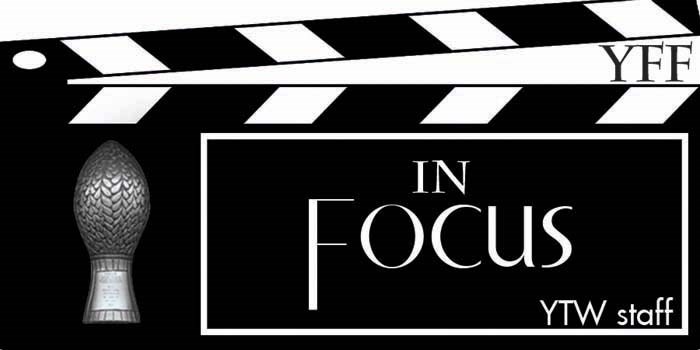In 2009, the George W. Bush era of American politics was coming to an end with the inauguration of Barack Obama.
Canada was only beginning our experiment with a similar-to-Bush administration—dubbed “borders, bombs and bibles by the maker of this week’s YFF In Focus selection—the full brunt of which we would only start to feel after the 2011 election.
That was the political backdrop for a 2009 documentary by Canadian performance artist Quinn called The U.S. and Us. From the onset I suspected this would be a film with an agenda. My first clue was the cover, which features the filmmaker clad in an Uncle Sam suit feeding a treat to a little lap dog in a Canada t-shirt.
The second indication was the list of political commentators, Maude Barlow, Jack Granatstein, Mel Hurtig, Linda McQuaig and David Orchard. To be fair, these are all highly intelligent, distinguished individuals, but nary a conservative-leaning pundit among them.
Not that I think that is necessarily required. Presenting a specific viewpoint is a legitimate journalistic activity. In fact, I think sometimes journalists create false balance by giving equal time to unequal opinions.
I was also intrigued by the description that the film was interspersed with vignettes of Quinn’s performance art.
Full disclosure, I have never been much of a fan of performance art. Too much of it is poorly executed and I end up feeling embarrassed for the perpetrator.
So much of what we do and what we think is informed by the present. I find it instructive to look at the past and this film did not disappoint in that respect.
The U.S. and Us raises many salient questions in the context of them time that are still, and perhaps even more, relevant today.
There is an old joke: Question: What defines Canadian identity? Answer: Not American.
As illustrated in the movie, under Bush, American foreign policy became more belligerent, domestic policy took on a more anti-science bent, freedoms were curtailed, society became more xenophobic, the environmental agenda decayed and income inequity exploded.
The U.S. and Us looks at the implication of these trends on Canadian sovereignty, specifically in the areas of energy, water and national security.
Of course, even as the new American administration started to reverse those trends following the release of the film, Canada was going in the opposite direction culminating in the much publicized and embarrassing incident when Stephen Harper chastised Obama over the Keystone pipeline.
It is virtually impossible to view Canada without keeping an eye on the elephant next door and the commentators in the documentary are reasonable people who legitimately raise concerns while still acknowledging the importance of the relationship.
And that’s where the technical aspects of the film start getting in the way a bit.
The performance art segments start out subtle and clever, but become more overtly biased and intrusive as the doc progresses creating a stark contrast with the thoughtful analysis of the commentators.
Nevertheless, the film raises questions that we continue to deal with today. Trade, security and sovereignty are perennial issues that every Canadian should be concerned about particularly in a North American political environment of heightened polarization.
It is poignant that the title of this film is suggestive of the theme of the current American presidential election, which might be characterized as ‘Us and Them.’ This is not something that is just happening between our two countries, but even within them.
In that way, The U.S. and Us, while having its problems as a documentary, is somewhat prescient in retrospect.




